Abstract
This article proposes specific areas of computing competence and illustrates how these skills can be acquired as an integral part of the curriculum of medical genetics. Geneticists are at the forefront in the use of computers for medical care, because of the driving force of the Human Genome Project. Computer searching of international data bases is the most efficient method to keep current with the explosion in molecular genetics data and with its immediate relevance to clinical care. The use of computers in genetics education could go far beyond the use of computer-assisted instruction (CAI) to show how to use computer systems to assist with clinical decisions. The proposed basic computer skills can be obtained using genetics software. The six proposed skills include the use of (1) microcomputers, (2) productivity software, (3) CAI, patient simulations and specific application programs, (4) remote computers, (5) data bases and knowledge bases, and (6) computers to improve the clinical care of patients.
Full text
PDF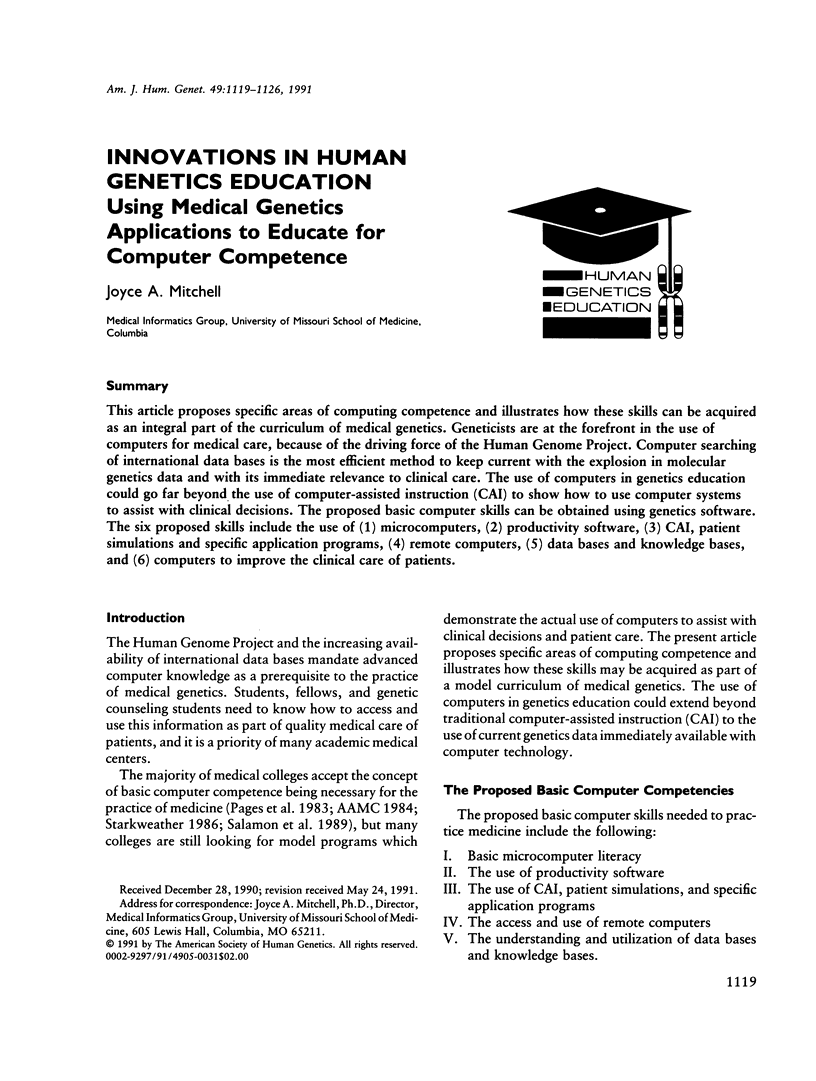
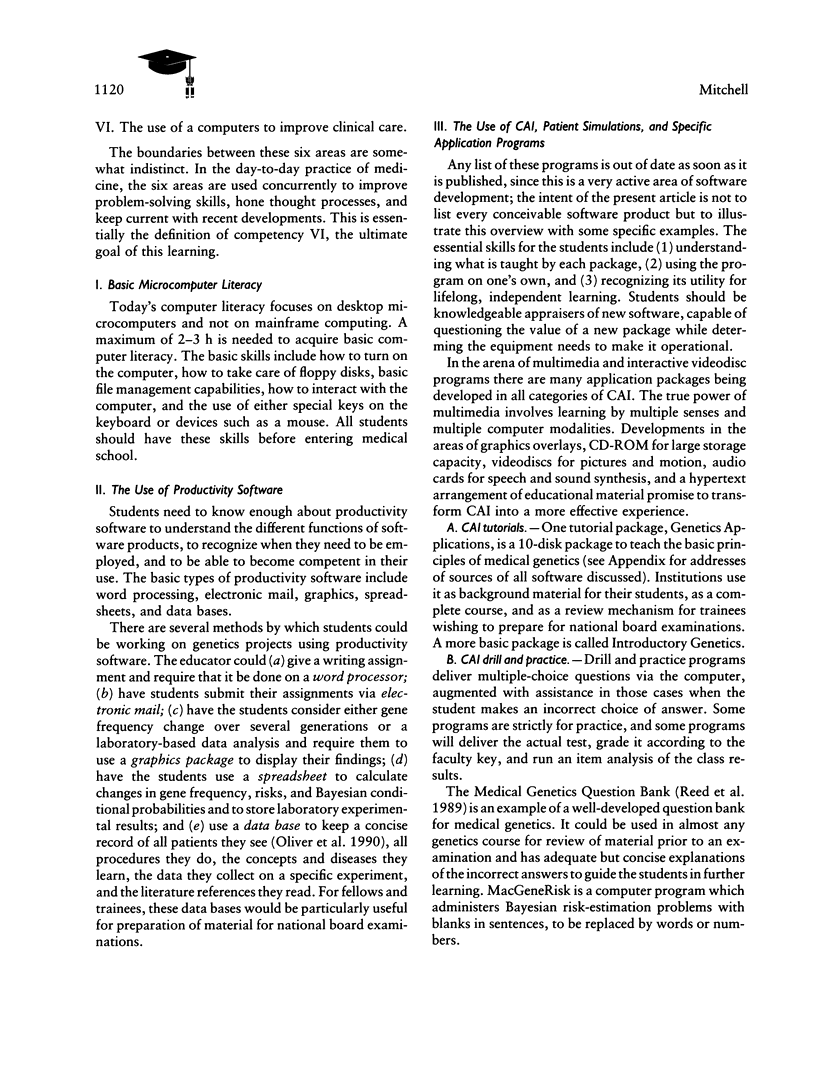
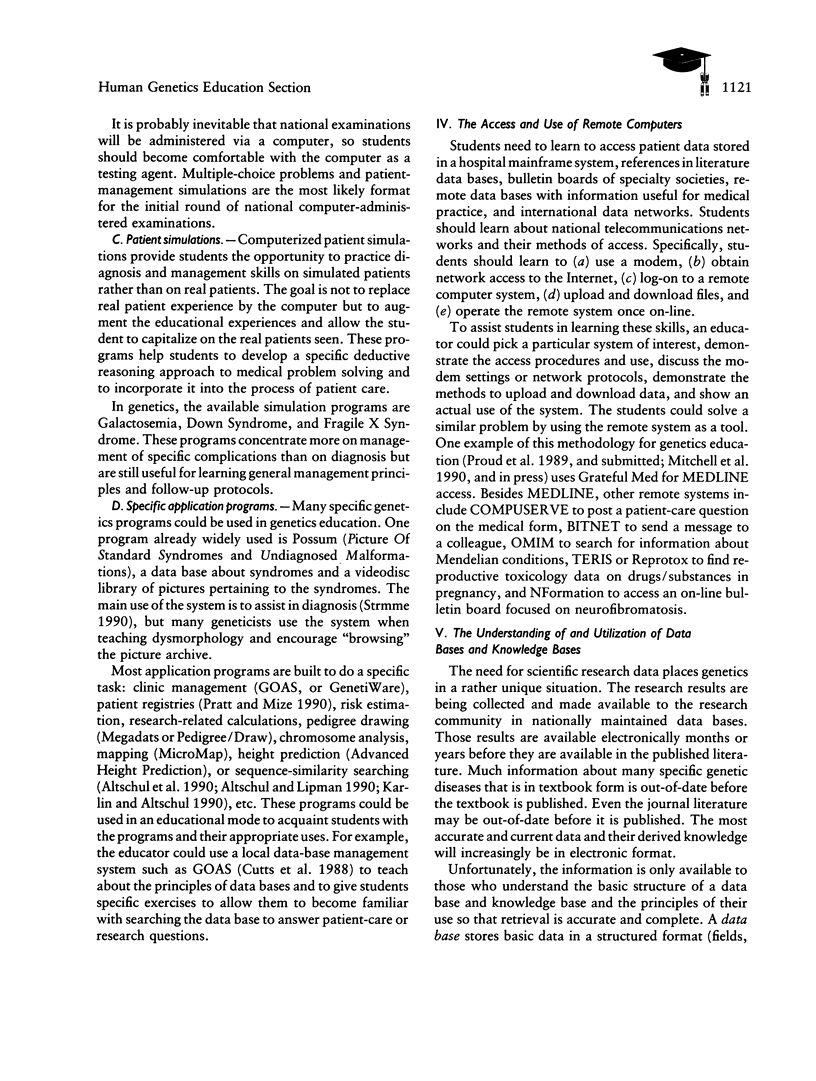
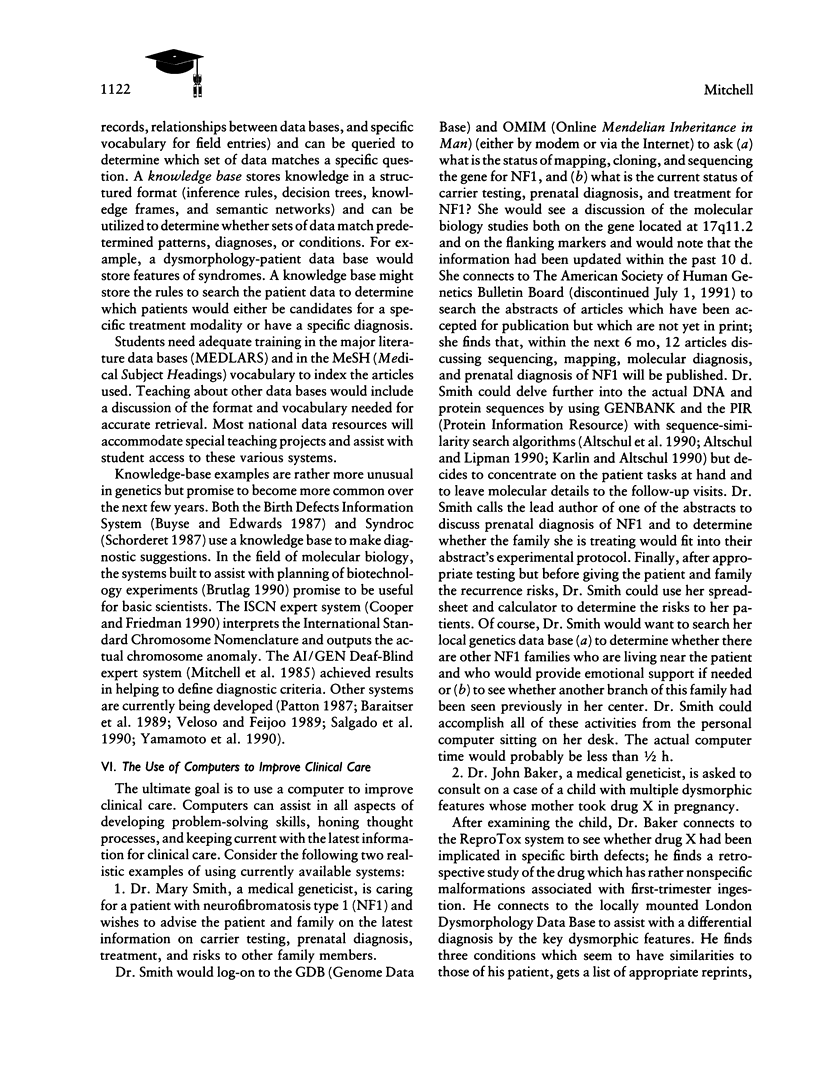
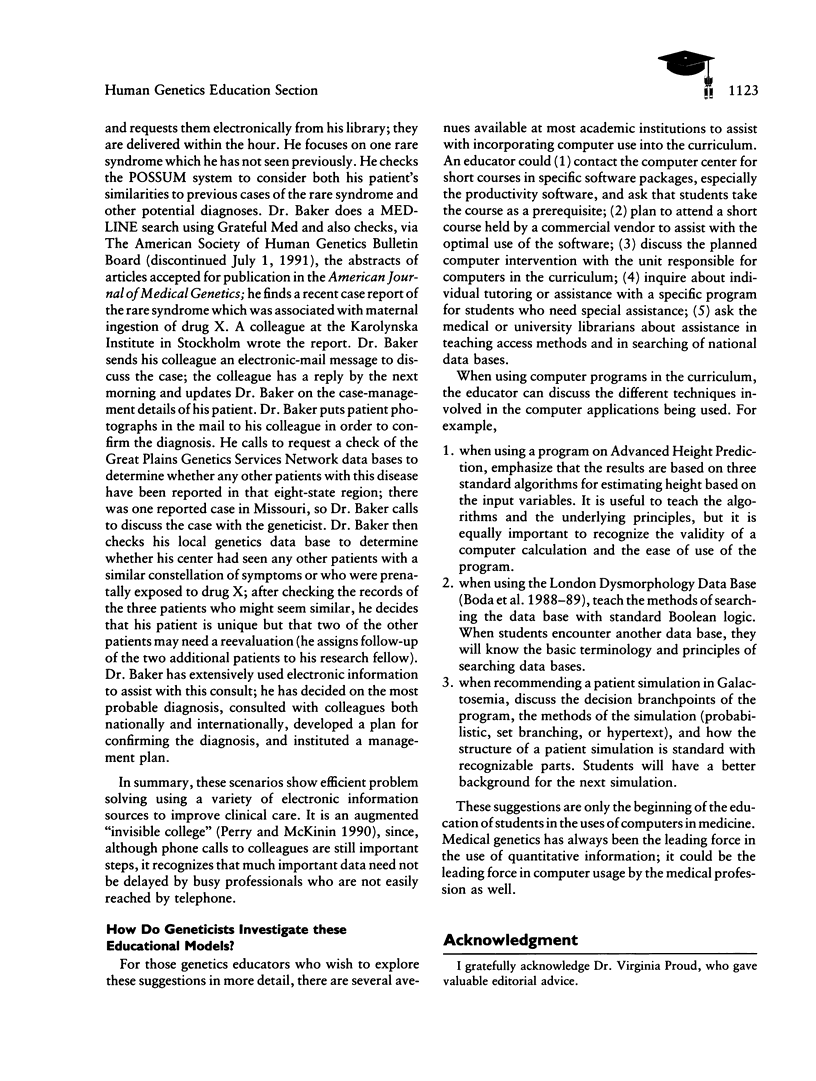
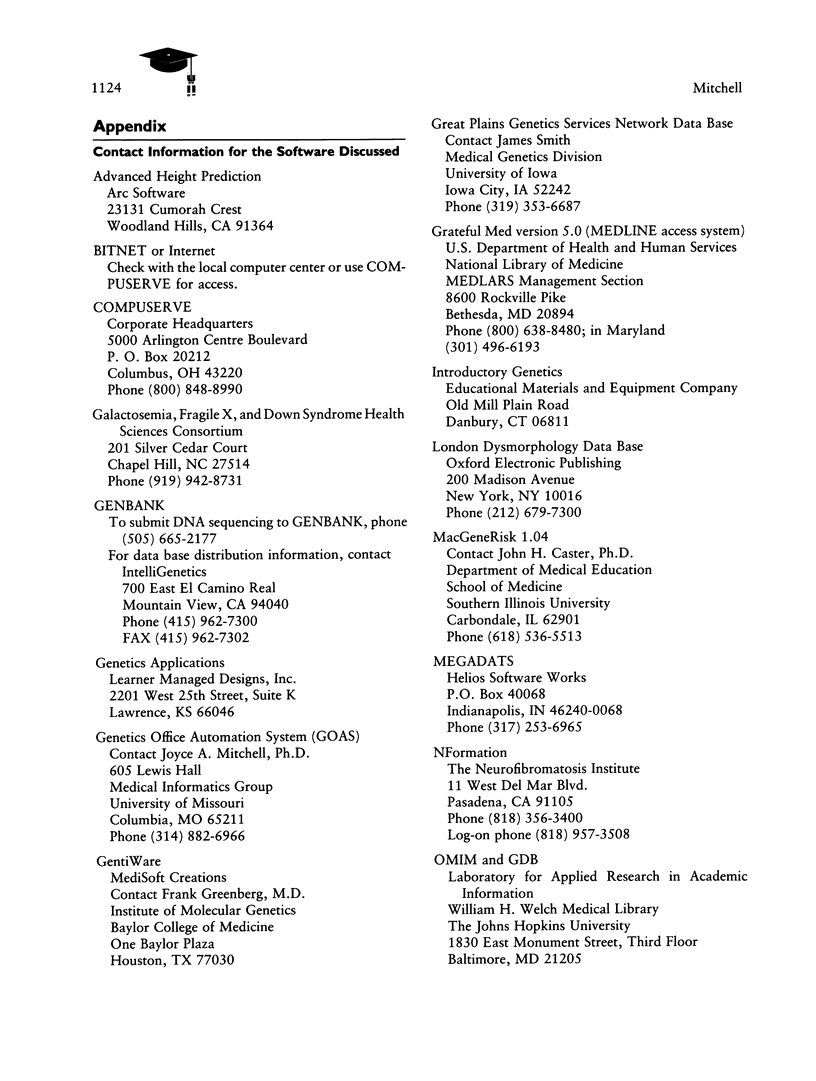
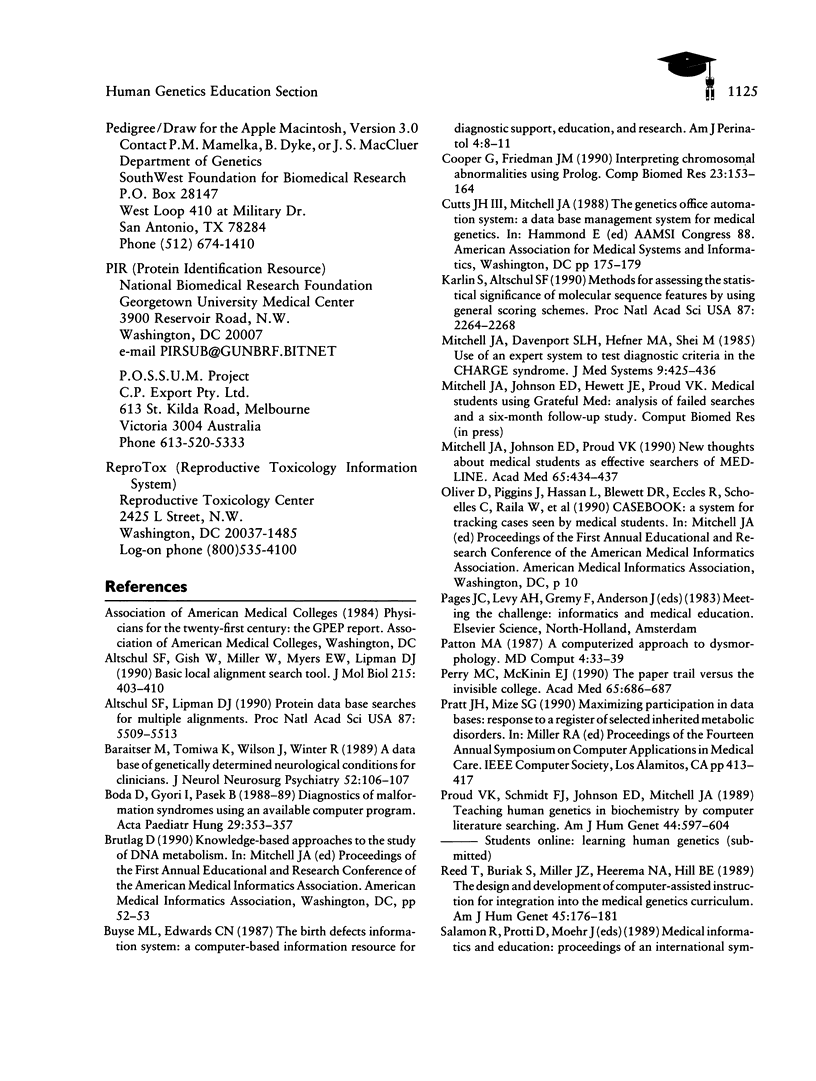
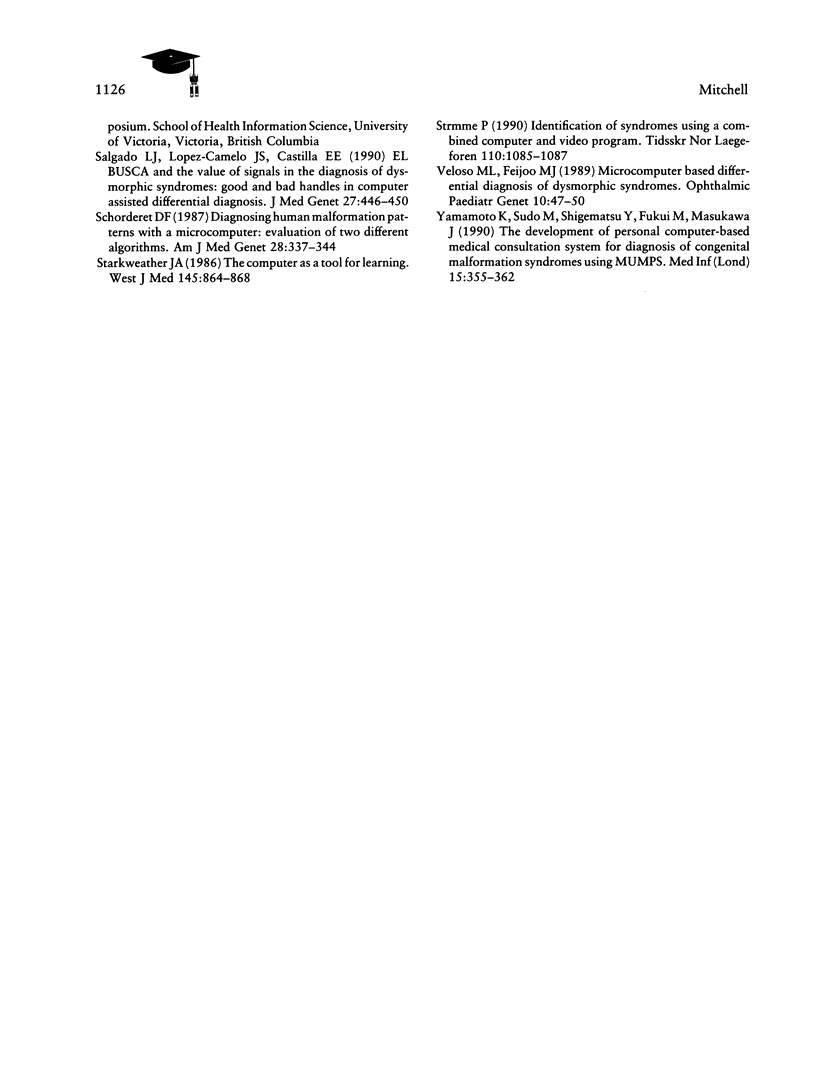
Selected References
These references are in PubMed. This may not be the complete list of references from this article.
- Altschul S. F., Gish W., Miller W., Myers E. W., Lipman D. J. Basic local alignment search tool. J Mol Biol. 1990 Oct 5;215(3):403–410. doi: 10.1016/S0022-2836(05)80360-2. [DOI] [PubMed] [Google Scholar]
- Altschul S. F., Lipman D. J. Protein database searches for multiple alignments. Proc Natl Acad Sci U S A. 1990 Jul;87(14):5509–5513. doi: 10.1073/pnas.87.14.5509. [DOI] [PMC free article] [PubMed] [Google Scholar]
- Baraitser M., Tomiwa K., Wilson J., Winter R. A database of genetically determined neurological conditions for clinicians. J Neurol Neurosurg Psychiatry. 1989 Jan;52(1):106–107. doi: 10.1136/jnnp.52.1.106. [DOI] [PMC free article] [PubMed] [Google Scholar]
- Boda D., Györi I., Pasek B. Diagnostics of malformation syndromes using an available computer program. Acta Paediatr Hung. 1988;29(3-4):353–357. [PubMed] [Google Scholar]
- Buyse M. L., Edwards C. N. The birth defects information system. A computer-based information resource for diagnostic support, education, and research. Am J Perinatol. 1987 Jan;4(1):8–11. doi: 10.1055/s-2007-999728. [DOI] [PubMed] [Google Scholar]
- Cooper G., Friedman J. M. Interpreting chromosomal abnormalities using Prolog. Comput Biomed Res. 1990 Apr;23(2):153–164. doi: 10.1016/0010-4809(90)90014-4. [DOI] [PubMed] [Google Scholar]
- Karlin S., Altschul S. F. Methods for assessing the statistical significance of molecular sequence features by using general scoring schemes. Proc Natl Acad Sci U S A. 1990 Mar;87(6):2264–2268. doi: 10.1073/pnas.87.6.2264. [DOI] [PMC free article] [PubMed] [Google Scholar]
- Mitchell J. A., Davenport S. L., Hefner M. A., Shei M. M. Use of an expert model to test diagnostic criteria in CHARGE syndrome. J Med Syst. 1985 Dec;9(5-6):425–436. doi: 10.1007/BF00992578. [DOI] [PubMed] [Google Scholar]
- Mitchell J. A., Johnson E. D., Proud V. K. New thoughts about medical students as effective searchers of MEDLINE. Acad Med. 1990 Jul;65(7):434–437. doi: 10.1097/00001888-199007000-00003. [DOI] [PubMed] [Google Scholar]
- Patton M. A. A computerized approach to dysmorphology. MD Comput. 1987 Mar-Apr;4(2):33–39. [PubMed] [Google Scholar]
- Perry M. C., McKinin E. J. The paper trail versus the invisible college. Acad Med. 1990 Nov;65(11):686–687. doi: 10.1097/00001888-199011000-00007. [DOI] [PubMed] [Google Scholar]
- Proud V. K., Schmidt F. J., Johnson E. D., Mitchell J. A. Teaching human genetics in biochemistry by computer literature searching. Am J Hum Genet. 1989 Apr;44(4):597–604. [PMC free article] [PubMed] [Google Scholar]
- Reed T., Buriak S., Miller J. Z., Heerema N. A., Hill B. E. Innovations in human genetics education. The design and development of computer-assisted instruction for integration into the medical genetics curriculum. Am J Hum Genet. 1989 Jul;45(1):176–181. [PMC free article] [PubMed] [Google Scholar]
- Salgado L. J., Lopez-Camelo J. S., Castilla E. E. EL BUSCA and the value of signals in the diagnosis of dysmorphic syndromes: good and bad handles in computer assisted differential diagnosis. J Med Genet. 1990 Jul;27(7):446–450. doi: 10.1136/jmg.27.7.446. [DOI] [PMC free article] [PubMed] [Google Scholar]
- Schorderet D. F. Diagnosing human malformation patterns with a microcomputer: evaluation of two different algorithms. Am J Med Genet. 1987 Oct;28(2):337–344. doi: 10.1002/ajmg.1320280211. [DOI] [PubMed] [Google Scholar]
- Starkweather J. A. The computer as a tool for learning. West J Med. 1986 Dec;145(6):864–868. [PMC free article] [PubMed] [Google Scholar]
- Strømme P., Ose L. Syndromidentifisering ved hjelp av et kombinert data- og videoprogram. Tidsskr Nor Laegeforen. 1990 Mar 30;110(9):1085–1087. [PubMed] [Google Scholar]
- Veloso M. L., Feijóo M. J. Microcomputer based differential diagnosis of dysmorphic syndromes. Ophthalmic Paediatr Genet. 1989 Mar;10(1):47–50. doi: 10.3109/13816818909083772. [DOI] [PubMed] [Google Scholar]
- Yamamoto K., Sudo M., Shigematsu Y., Fukui M., Masukawa J. The development of personal computer-based medical consultation system for diagnosis of congenital malformation syndromes using MUMPS. Med Inform (Lond) 1990 Oct-Dec;15(4):355–362. doi: 10.3109/14639239009025284. [DOI] [PubMed] [Google Scholar]


